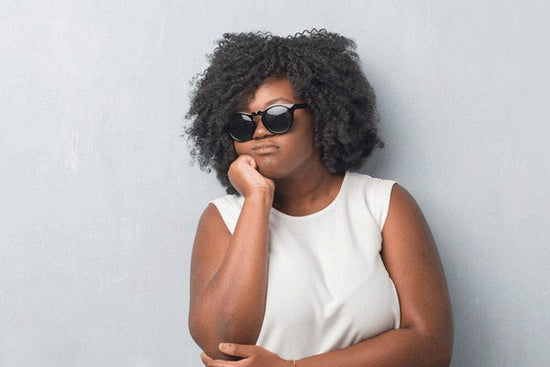
Why Do I Hide My Pain? Understanding the Shame Behind Physical Suffering
Why do I hide my pain? Not because I want to suffer in silence, but because I’ve been taught that showing physical pain makes me weak, dramatic, or a burden. Like so many others, I’ve learned to mask my pain to avoid judgment, rejection, or even disbelief. This isn't just a personal choice—it’s a social survival skill. But the cost of hiding pain runs deep. In this article, we’ll explore the emotional and cultural reasons behind pain suppression—and why breaking the silence is a powerful act of self-compassion.
Why do I hide my pain? Because society often teaches us to suppress physical suffering, masking it with smiles to avoid judgment, rejection, and the stigma of chronic illness.
Hiding pain is a survival strategy shaped by fear of vulnerability, shame, and medical gaslighting—especially for women, who are conditioned to put others’ comfort before their own.
Breaking the silence around invisible illness means confronting chronic pain stigma , challenging toxic strength culture, and unlearning the emotional masking that keeps us isolated.
Table of Contents: Why Do I Hide My Pain and the Cost of Hiding Physical Pain
Why Do People Hide Their Pain? Understanding the Shame Behind Physical Suffering
The answer to "Why Do I Hide My Physical Pain?" lies in a complex interplay of societal expectations, fear of vulnerability, and the desire to avoid burdening others.
The Temptation To Hide My Physical Pain
As a woman living with fibromyalgia and rheumatoid arthritis, the question “why do I hide my pain?” isn’t hypothetical—it’s deeply personal. For years, I became skilled at hiding the pain , smiling through the torment while my body screamed for rest and recognition. Masking pain became second nature, not because I wanted to pretend everything was fine, but because physical pain and society rarely coexist with empathy. When I reached rock bottom—after being dismissed by doctors who trivialized my suffering—I finally began to understand the complex web of shame, fear, and survival behind my silence.
In the early stages of fibromyalgia and rheumatoid arthritis, I couldn’t yet fathom how profoundly these conditions would reshape my life. The relentless joint pain, chronic fatigue , and disorienting brain fog didn’t just invade my body—they disrupted my sense of self. As I turned to doctors for help, I was met with raised eyebrows and cold indifference.
"You’re just stressed."
"Maybe it’s anxiety."
"Try yoga."
Their words echoed louder than the pain itself. Their refusal to see what was invisible taught me an enduring lesson: in a world that minimizes suffering it can’t quantify, hiding pain feels safer than exposing it.
This erasure led to a kind of emotional masking. I began to doubt the reality of my own experience. Was I overreacting? Was it really that bad? This internalized dismissal, fueled by chronic pain stigma, pushed me to suppress the pain , both emotionally and physically. I feared vulnerability. I feared judgment. I feared being perceived as fragile, dramatic, or broken.
So I hid. Not just from others—but from myself.
But I’ve come to realize that hiding the pain isn’t strength—it’s a trauma response, reinforced by a society uncomfortable with discomfort. And I’m not alone in this. Many of us are taught to see pain as something to endure silently, or worse, as a personal failure. We see it framed as weakness, or in some spaces, suffering was seen as a test of faith. .
Coming to terms with this has been messy and painful—but also freeing. I’ve started sharing my story, not to seek pity, but to be seen. To reclaim what was always real. And to help others who may be silently asking themselves, “Why do I hide my pain?”
If you or someone you love is navigating the silence of invisible illness, I encourage you to read How to Explain Fibromyalgia to My Husband —a powerful companion piece about breaking down walls between pain and partnership.
"Society often teaches us to do just that—to hide our physical pain, to push through it, and to keep up appearances."
The Cost of Hiding Pain: Why We Mask Suffering in Silence
The burden of physical pain doesn’t just wear down the body—it erodes the soul. It consumes your thoughts, distorts your self-worth, and drains the energy needed to engage with the world. And yet, physical pain and society rarely coexist with compassion. Instead, we're conditioned to endure quietly, to keep moving, to hide the pain for the comfort of others. This conditioning is especially acute for women, who are expected to be caregivers first and sufferers last.
Why do I hide my pain? Because the world often tells me to. Hiding pain becomes a learned response—a way to navigate spaces that don’t make room for vulnerability. There’s an unspoken demand to appear strong, selfless, and endlessly capable, even when chronic illness turns everyday tasks into uphill battles. In a culture where shame and physical pain go hand-in-hand, we’re praised not for seeking help but for our ability to suppress pain with a smile.
There’s also the persistent fear of vulnerability —a worry that showing pain might inconvenience others or invite uncomfortable stares. We're afraid of being seen as “too much,” or worse, not believed. So we adapt. We perform. We use emotional masking as a shield against judgment and pity. We learn to laugh when we want to cry. And over time, we become so good at masking pain that even we forget how much we're holding back.
This is the unseen reality for many people with invisible disabilities. If you’ve ever wondered what it’s like to live this way, I invite you to read What It's Really Like to Live with an Invisible Disability. It offers a raw and honest glimpse into the daily negotiation between pain and presentation.
Sometimes, hiding the pain is less about deception and more about survival. We find creative ways to cope—like using humor as armor. Laughter becomes a release valve when there’s no room for breakdowns. If you’ve ever relied on comedy to carry you through a flare-up, How Humor Helps People with Chronic Illness Cope may resonate with your story too.
Because while society may reward silence, our truth deserves space.
Why Hiding Pain Keeps Us Isolated—and How Support Sets Us Free
At some point, I had to confront the hard truth: hiding the pain wasn’t protecting me—it was imprisoning me. I spent years wondering why do I hide my pain and convincing myself that silence was strength. But in reality, that silence fed my suffering. It cut me off from others and denied me the compassion and care I so deeply needed.
When we suppress pain out of fear—of judgment, dismissal, or being labeled “too much”—we begin to lose connection with ourselves and the people who care about us. Shame and physical pain become intertwined, making it feel safer to endure alone than to risk being misunderstood. That’s the tragic power of chronic pain stigma: it doesn’t just make our suffering invisible—it makes us feel invisible too.
For me, the turning point came through connection. As I began sharing my story with others living with invisible illnesses, I found a lifeline. In online communities filled with empathy, humor, and hard-earned wisdom, I encountered people who got it—people who had asked themselves, just like me, why do I hide my pain? Their stories helped dismantle my walls of emotional masking , one post, one comment, one shared experience at a time.
Opening up to loved ones was harder. Vulnerability is never easy, especially when we fear becoming a burden. But I learned that the fear of vulnerability is often louder than the reality. When I finally allowed my family to see what I was carrying, they didn’t turn away. They leaned in. They listened. And in that act of sharing, I discovered a deeper, more honest kind of intimacy.
In a world obsessed with strength, softness can be revolutionary. If you’re still learning how to step out of survival mode, I recommend reading how to start living for yourself —it’s a gentle reminder that your needs matter, even when society tells you otherwise.
And if you're worried that speaking up about your pain will be compared or minimized in some cruel game of suffering, you’re not alone.
We don’t need to win the oppression olympics to be worthy of care. Pain is valid—spoken or unspoken—but healing often begins the moment we decide not to hide anymore.
"Hiding our physical pain does us a disservice"
Finding Your Voice: Why Advocating for Your Pain Matters More Than Ever
One of the most pivotal steps in my healing journey was learning to advocate for myself in the often discouraging world of chronic pain treatment. After years of hiding pain and having it dismissed, I realized that masking pain for the comfort of others was slowly erasing me. So I stopped whispering. I started speaking. I sought out healthcare professionals who specialized in chronic pain —ones who listened without judgment and didn’t require me to prove my suffering before offering support.
It wasn’t easy. Physical pain and society are often at odds, and the medical system is no exception. But through persistence, I found doctors who validated my reality and built treatment plans that reflected my lived experience. That validation—being believed—was more healing than any prescription. It helped me release the shame I had internalized and gave me the courage to stop suppressing pain just to appear strong.
So, why do I hide my pain? I hid it to survive in a world that made it unsafe to be honest. I hid it to avoid judgment, pity, and disbelief. But I’m learning that hiding the pain only deepens the wound. It disconnects us from ourselves and others. And it keeps us small when we deserve to take up space—even in pain.
Pain does not need to be silenced to be valid. It does not have to be compared, minimized, or hidden. Your story, no matter how quiet or messy or raw, deserves to be told.
If you've ever felt like screaming "my chronic pain is killing me" into the void, you're not alone. And if you're still trying to explain the invisible toll your illness takes each day, learning about spoon theory and chronic pain can be a powerful starting point for both understanding and advocacy.
Because the more we name our pain, the less power it has over us. And the more we share it, the more we remind each other: we were never meant to carry it alone.

The ‘Break the Mold’ t-shirt is for those who refuse to be boxed in.









